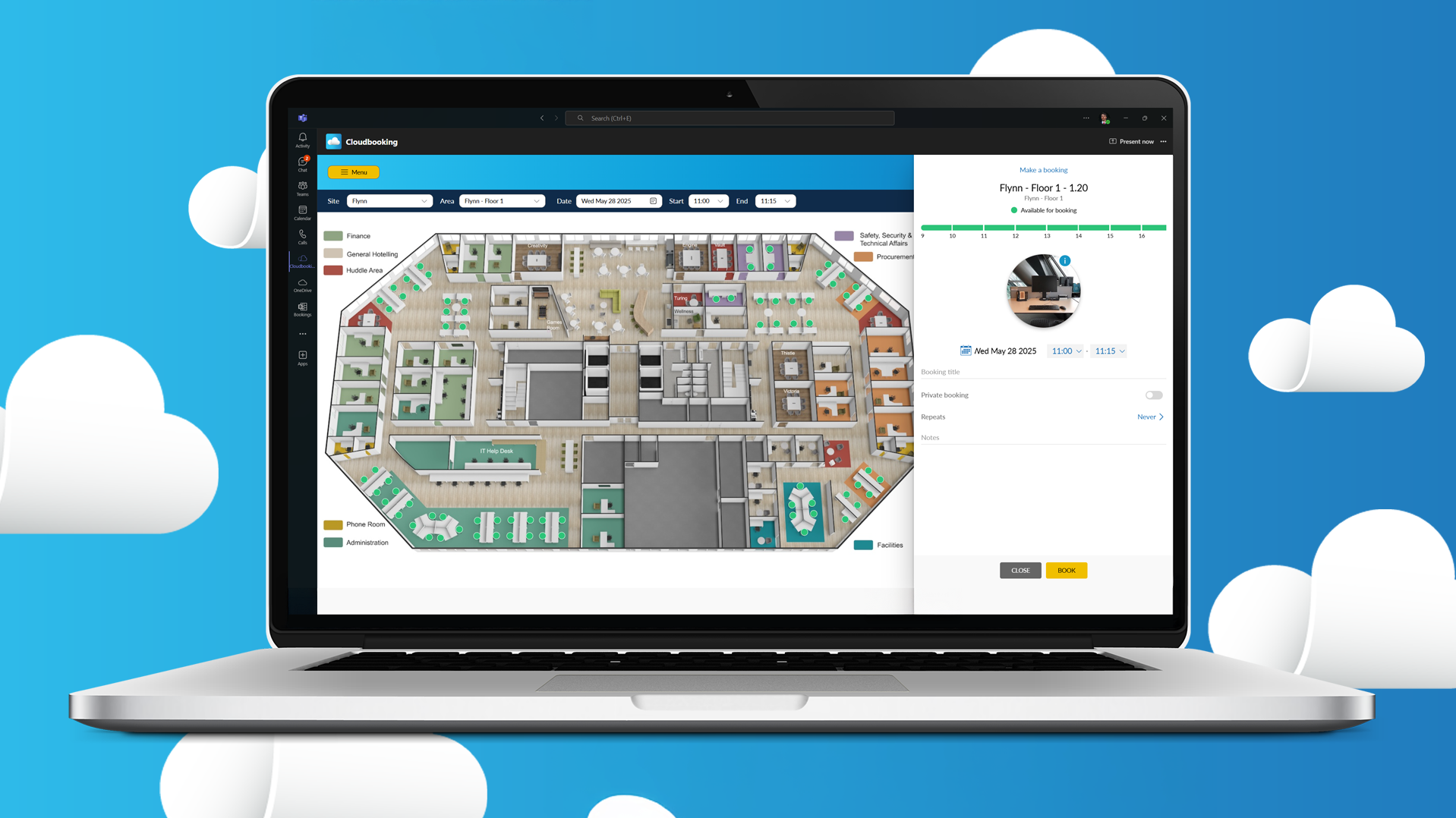
If the current Twitter chaos has taught us anything, it’s that a single person can’t run a business. Instead, the focus must be on team effort. The workplace is changing. Businesses are no longer reliant on a hierarchical structure with a clear chain of command. Instead, the focus is shifting to collaboration.
As a result, businesses must adapt their structures and rethink their approach to workplace collaboration.
In today’s business landscape, the most successful companies embrace collaborative working. By encouraging employees to work together, businesses can tap into a wealth of knowledge and ideas. Furthermore, team-based working fosters a sense of ownership and responsibility, promoting engagement and motivation.
In the era of hybrid working, workplace collaboration is more critical than ever. If businesses want to stay ahead of the curve, they need to reevaluate their approach to the workplace and start promoting collaboration.
What is collaborative working?
Workplace collaboration is when employees across the organisation work together to achieve a goal. It’s all about teamwork, sharing ideas and discussing the approach. A collaborative workplace is one where everyone is working towards the same goal and has a role to play.
Collaborative working helps create a more efficient workplace, allowing employees to share knowledge and skills. It also helps to build trust and rapport within the team. When done correctly, workplace collaboration can result in better decision-making, increased creativity and improved productivity.
Related Reading: 8 Takeaways from Cloudbooking’s Research on the Future of the Workplace
Practical pointers for a collaborative workplace
So how does an organisation adopt a more collaborative mindset? Here are some practical pointers that organisations of any size and sector can take on board to earn the benefits of collaborative working.
Meeting collaboration
Anyone attending a workplace meeting knows that they can often be inefficient and unproductive. One way to help make meetings more effective is to have a formal agenda. With an agenda, everyone knows what the purpose of the meeting is and what needs to be accomplished.
As a result, there is less time wasted on small talk and side conversations. Having an agenda also helps to keep everyone on track and focused. By being better prepared for meetings, we can help to create a more collaborative workplace.
Use ice-breaker questions
Start meetings and discussions with ice-breaker questions. By asking questions that get people talking and thinking about something other than work, you can help create a more collaborative workplace.
Ice-breaker questions can also help build relationships and trust among team members, making it more likely that they will be willing to collaborate in the future. When used effectively, ice-breaker questions can be an essential tool for promoting workplace collaboration. However, they need to be planned as part of the formal agenda, and not allowed to sidetrack attendees.
Hold a launch meeting
Workplace collaboration doesn’t just happen by itself. It needs to be carefully planned and managed. One way to do this is to host a formal launch event whenever a new team is created to work on a goal. This event allows team members to get to know each other, understand the goals and objectives of the group, and establish how they will work together.
It’s also an excellent opportunity for team leaders to set the tone for the team’s future interactions. By hosting a launch event, you can ensure that your workplace collaboration is off to a strong start.
Related Reading: The Cloudbooking Guide to Planning Productive Hybrid Meetings
How leaders can encourage workplace collaboration
Successful businesses are built on solid teamwork and collaboration between employees. But collaboration must be encouraged by those in leadership positions to truly thrive in the workplace. Here are a few ways leaders can encourage workplace collaboration and get the most out of their teams.
Set goals
Leaders need to set clear goals for workplace collaboration. Employees are more likely to collaborate when they clearly understand their roles and the team goals that everyone is working toward. A clear understanding of workplace collaboration reinforces the idea that everyone’s success is linked and encourages employees to work together to achieve collective goals.
Leaders who set clear goals for workplace collaboration create a cohesive workplace culture and inspire employees to be their best selves. Workplace collaboration can increase productivity, creativity, job satisfaction, and even organisational profitability when aligned with organisational goals. By setting clear goals for workplace collaboration, leaders can create a collaborative workplace that meets the needs of all employees.
Leader behaviour
If your leaders are working collaboratively themselves, it sets a good example for the rest of the workforce and makes it much easier to encourage collaboration among employees. Your leaders need to be demonstrating collaborative behaviours themselves and setting the tone for a more cooperative workplace. Only then will you be able to create a truly collaborative working environment.
Celebrate wins
When workplace collaboration is successful, it’s important to celebrate the wins. Celebrating wins helps to build morale and motivation, and it’s a way to show appreciation for the hard work that employees are doing. Ultimately, celebrating successes is an integral part of workplace collaboration.
Especially on long-term and complex projects, it’s not always easy for your team to recognise the achievements they’ve made. However, celebrating these wins helps to keep everyone on track and focused on the larger goal. Workplace collaboration is essential for the workplace today, and recognising successes is an essential part of workplace collaboration.
Related Reading: How to Enhance Workplace Culture in a Post-Covid Hybrid Environment
Communication in a collaborative workplace
Good communication is essential for collaboration because it helps team members stay on the same page and work together more efficiently. Without effective communication, projects can quickly derail and be frustrating for everyone involved. Luckily, there are some simple things business owners can do to encourage open and positive communication among their employees.
Effective, active listening
In today’s workplace, encouraging active listening is more important than ever. With a workforce that’s spread globally or consists of a diverse team, making sure everyone feels heard and involved can be more challenging. Helping employees (especially leaders and managers) develop their active listening skills can go a long way in creating a collaborative workplace.
You can foster a more creative and innovative workplace by creating an environment where everyone feels comfortable speaking up and sharing ideas. And when employees feel like they’re being listened to, they’re more likely to be engaged and motivated in their work. So if you want to promote a collaborative workplace, encourage active listening!
Hybrid communication
With so many employees working remotely, it can be difficult to foster a sense of teamwork and communication. One way to overcome this challenge is to adopt hybrid communication models. By giving employees many different ways to communicate with each other, you can create a more collaborative and effective workplace.
Email, instant messaging, and video calls are all great tools you can use to enhance workplace collaboration. By utilising these tools, you can give employees the ability to communicate in the most effective way. As a result, you will create a more communicative workplace, which means your workplace will become more productive and efficient.
Building a collaborative working environment
Your working environment is more than just the physical space in which you do your job. It’s also the people you work with, the culture of your organisation and the way you are managed. A collaborative workplace is where people feel comfortable working together to achieve common goals. Creating such an environment isn’t always easy, but it’s essential if you want to harness the collective power of your team. Here are some tips for creating a collaborative workplace.
Employee experience
Workplace collaboration doesn’t just happen – it needs to be encouraged and nurtured. One of the best ways to do this is to prioritise the employee experience. When employees feel valued and engaged, they are more likely to collaborate.
You can improve workplace collaboration by ensuring employees have the tools they need to do their job, providing opportunities for training and development, and encouraging open communication. By making the employee experience a priority, businesses can create a collaborative workplace that drives innovation and success.
Related Reading: Are You Creating Psychological Safety in the Workplace?
Consistent tools
A collaborative workplace is one in which employees can work together to achieve common goals. To create a collaborative workplace, providing employees with consistent tools is essential. Searching several systems to find a message or learn a new tool every couple of months can be frustrating and time-consuming.
By providing employees with consistent tools, you will make it easier for them to communicate and collaborate.
Upskilling and employee development
In today’s rapidly changing economy, it’s more important than ever for employees to keep their skills up to date. That’s why many companies are investing in employee development programs. By providing training and opportunities for employees to learn new skills, businesses can stay competitive and adapt to the ever-changing landscape.
Furthermore, developing employees’ skills can also lead to improved job satisfaction and motivation. Employees who feel like they are constantly learning and growing are more likely to be engaged with their work. As a result, upskilling and employee development programs can bring numerous benefits to employees and employers.
When workplace collaboration is encouraged, upskilled employees can share their new skills and knowledge with others, which can lead to new insights and perspectives. Additionally, collaborative working can help to build trust and respect between employees, fostering a supportive environment that is conducive to learning and growth.
Related Reading: Apprenticeships, Mentoring, and Graduate Programs in the Post-Lockdown Hybrid Workplace
The benefits of a collaborative team
Collaboration is a key element of any successful organisation, and there are many benefits to having a collaborative team. Let’s look at the key benefits of a collaborative workplace.
Encourages problem-solving
A collaborative team encourages its members to solve problems together. This can lead to improved communication and creativity as team members share their ideas and work together to find solutions. When multiple people are working on solving a problem, it becomes easier to find a solution.
This is because more minds are working on the problem and sharing ideas. In addition, when team members know that others are counting on them, they are more likely to put forth their best effort in finding a solution.
Skill-sharing
Collaborative teams allow employees to share their skills. This can help employees learn new skills and improve their existing ones. In addition, skill-sharing can also help build trust and rapport among team members.
Goal alignment
When everyone is working towards the same goal, staying focused and on track is easier. Collaborative teams help to ensure that all members are aware of the team’s goals and are working towards achieving them.
Improved productivity
Studies have shown that employee productivity rates improve when they are part of a collaborative team. This is likely because employees feel more engaged and motivated when working together towards a common goal.
Less isolation
Remote teams can often feel isolated from the rest of the company. However, remote teams can feel more connected and become more efficient in their work when they are part of a collaborative team. This is because they have access to the same resources and information as the rest of the team, which makes it easier for them to accomplish their tasks while feeling that connectivity to other team members.
Improved employee wellness and engagement
When employees feel like they are part of a supportive team, they are more likely to enjoy their work and be engaged in their job duties. In addition, studies have shown that employees who feel supported by their team have lower levels of stress and anxiety, leading to improved employee wellness.
Related Reading: 3 Key Drivers of Employee Engagement in Hybrid Teams
Vertical hierarchy vanishes
In traditional organisations, there is often a vertical hierarchy where decision-making power is concentrated at the top levels of management. However, in collaborative teams, decision-making is spread out among all team members, which eliminates the need for a vertical hierarchy. This flattening of the organisation can lead to improved communication and increased innovation.
Attract top talent
When you have a collaborative team, you will attract top talent . This is because prospective employees will see that your organisation values teamwork and collaboration. In addition, prospective employees will also notice that your organisation is committed to developing its employees’ skills. As a result, you will be able to attract top talent to your organisation.
Improved employee loyalty
When employees feel valued and appreciated, they are more likely to be loyal to your organisation. A collaborative workplace shows employees that their opinions matter and that they are an essential part of the team. As a result, you will experience improved employee loyalty.
Related Reading: The Future of Work Collaboration: How to Get Your Office ‘Collaboration Ready’
Start building a more collaborative workplace
There are many benefits to having a collaborative workplace, including improved problem-solving, skill-sharing, goal alignment, and employee productivity. If you want to attract the best employees, improve employee well-being, and eliminate the need for an outdated vertical hierarchy then consider implementing collaborative teams.
Collaborating with a team makes it possible to do great things. While teamwork isn’t always easy, and there will be some challenges in innovation or efficiency, these gains far outweigh any short-term difficulties that might occur because they lead towards amazing outcomes for everyone involved!
Cloudbooking’s agile working tools can enhance workplace collaboration so your team gets more productive and innovative. Contact us now for a no-obligation product demo.


